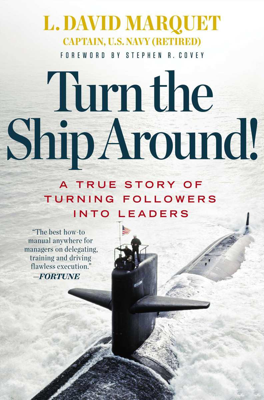Up Scope!
Critical Tactical Error and Reflective Learning
David Marquet encounters a tactical mishap when he assumes he must make a snap decision on the USS Santa Fe's positioning to engage the enemy, leading to the ship finding itself out of the desired tactical position. This problematic situation arises from treating non-emergency scenarios with the urgency of crises, revealing a flaw in the ingrained top-down command approach.
Emergence of Top-Down Habits Under Pressure
In a demanding scenario involving tactical placement against an enemy submarine, Marquet defaults to directly giving a solution without consulting the team. This approach, rooted in conventional top-down leadership practices, was counterproductive as it deprived the crew of critical thinking practice in aligning with broader organizational goals.
Resist the Urge to Provide Solutions
Marquet reflects on how a more inclusive discussion might have been beneficial but feels constrained by time and energy. This incident emphasizes a key leadership mechanism: Resist the Urge to Provide Solutions, aiming to shift from a leader-follower to a leader-leader model by fostering team engagement in decision-making processes.
Leveraging Crisis Model Incorrectly
Reflecting on his actions, Marquet realizes that while immediate decisions are necessary in emergencies, most situations aboard are not emergencies and hence, can benefit from a collective problem-solving approach. The event underscores the dysfunctional cycle of reactive decision-making where rapid commands do not allow team development or preparation for future decision-making roles.
Strategies to Encourage Independent Decision-Making
Marquet outlines approaches to break the cycle of dependency: - Immediate Decisions: Make them during actual emergencies, followed by a team review to evaluate these decisions. - Urgent Decisions with Time Allowance: Solicit rapid team input before deciding. - Decisions with Time Flexibility: Compel the team to deliberate and provide input, emphasizing the value of diverse perspectives and dissent.
Conclusion and Reflective Questions
The chapter concludes with questions that encourage leaders to assess the depth of top-down practices in their organizations and to explore ways of fostering open decision-making among their teams. This reflection is meant to enhance awareness of when to control and when to delegate, aiming at cultivating a team capable of strategic thinking and self-direction.
